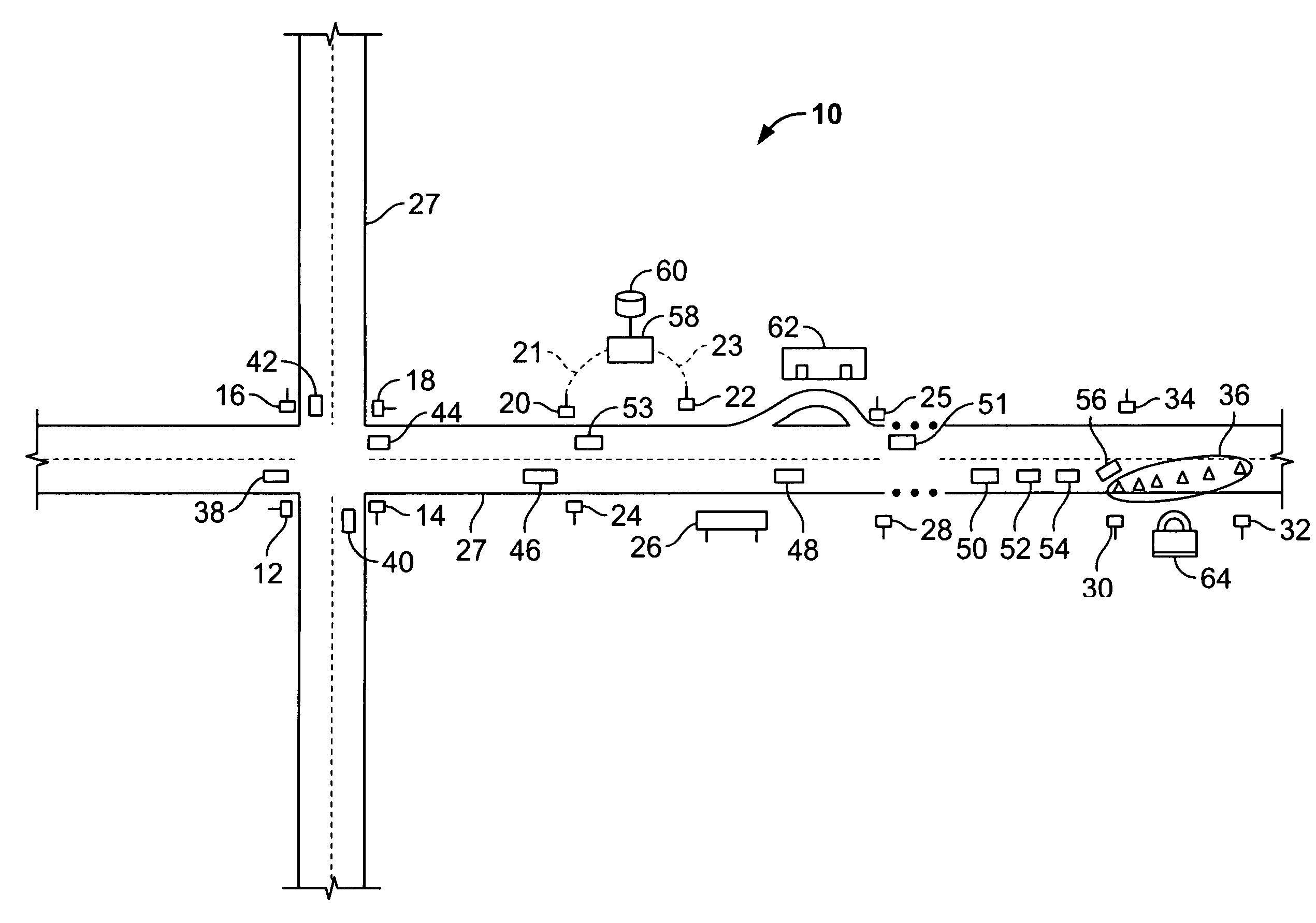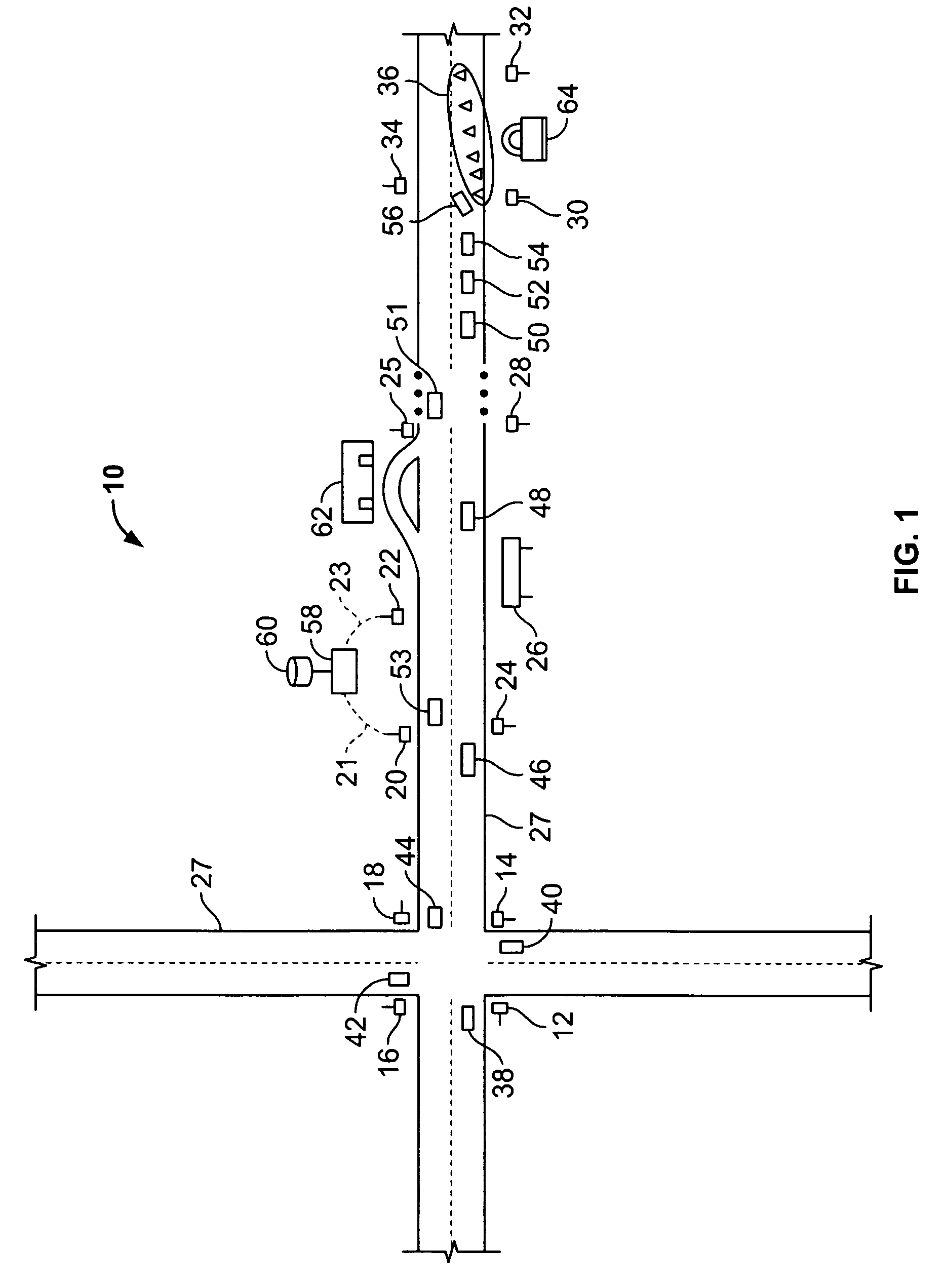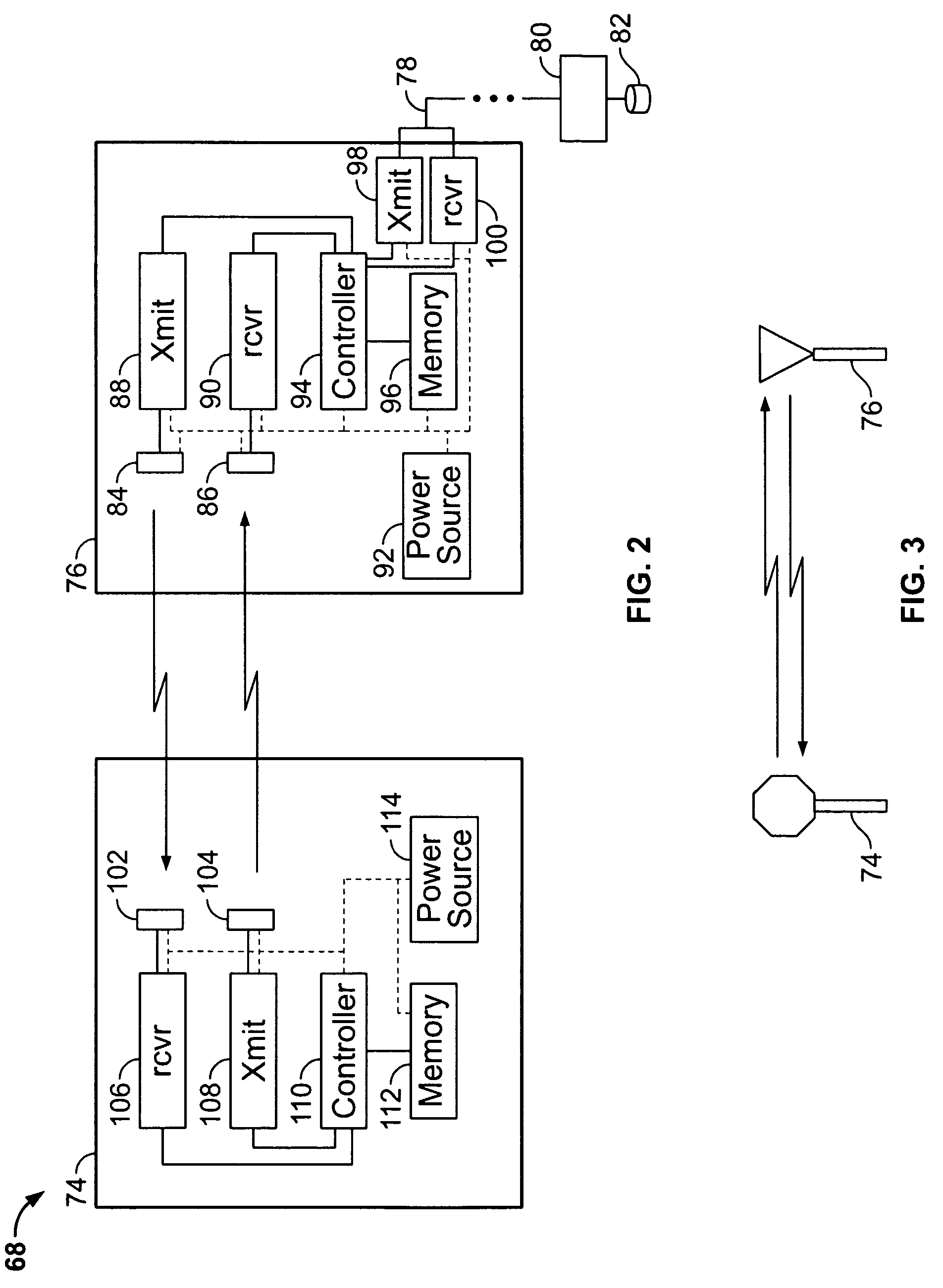Wireless traffic control system
a traffic control system and wireless technology, applied in the direction of signaling systems, controlling traffic signals, instruments, etc., can solve the problems of affecting the effectiveness of providing traffic control information to drivers, elderly drivers may not see or process the information on traffic control signs, and loss of attention to the information provided on traffic control signs
- Summary
- Abstract
- Description
- Claims
- Application Information
AI Technical Summary
Benefits of technology
Problems solved by technology
Method used
Image
Examples
Embodiment Construction
[0014]FIG. 1 illustrates an exemplary embodiment of a wireless traffic control system 10 providing wireless communication of information between a plurality of traffic control signs. The wireless traffic control system 10 generally includes a plurality of traffic control signs configured to wirelessly communicate information therebetween. For example, as shown in FIG. 1, traffic control signs 12, 14, 16, 18, 20, 22, 24, 25, 26, 28, 30, 32 and 34, and hazard zone artifacts 36 (e.g., traffic cones) together form a wireless network for communicating information between the traffic control signs and hazard zone artifacts. In operation, traffic control signs 12, 14, 16, 18, 20, 22, 24, 25, 26, 28, 30, 32 and 34, and hazard zone artifacts 36 may wirelessly transmit and receive vehicle information and / or traffic control information between each other, which may include information about the vehicles on the roadway 27 that is received from the vehicles as described in more detail herein.
[00...
PUM
 Login to View More
Login to View More Abstract
Description
Claims
Application Information
 Login to View More
Login to View More - R&D
- Intellectual Property
- Life Sciences
- Materials
- Tech Scout
- Unparalleled Data Quality
- Higher Quality Content
- 60% Fewer Hallucinations
Browse by: Latest US Patents, China's latest patents, Technical Efficacy Thesaurus, Application Domain, Technology Topic, Popular Technical Reports.
© 2025 PatSnap. All rights reserved.Legal|Privacy policy|Modern Slavery Act Transparency Statement|Sitemap|About US| Contact US: help@patsnap.com



